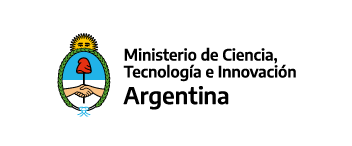Mural Nº4
Monte y Estepa
Medidas / Size: 13 x 3 mts.
Ubicación / Location: Centro Científico Tecnológico CCT CONICET-CENPAT
Artistas / Artists: Micaela Neira Vásquez – Jorge Augusto Vásquez – Claudio Omar Segundo.
Realización / Made: Septiembre 2017 a Marzo 2018.

En las inmediaciones de Puerto Madryn la vegetación está representada por componentes florísticos tanto de la Provincia Fitogeográfica Patagónica como de la porción más austral de la Provincia Fitogeográfica del Monte. El Bioma de Estepa Patagónica se caracteriza por un relieve variado de mesetas, serranías, bajos y valles. El clima es árido y/o semiárido, con vientos dominantes del Oeste-Suroeste, inviernos fríos y veranos templados y secos, con marcadas amplitudes térmicas y una alta variabilidad inter e intraanual de precipitaciones.
In the vicinity of Puerto Madryn the vegetation is represented by floristic components of both the Patagonian Phytogeographic Province and the most southern portion of the Mount Phytogeographic Province. The Patagonian Steppe Biome is characterized by a varied relief of plateaus, highlands, lows and valleys. The climate is arid and/or semi-arid, with dominant winds from the West-Southwest, cold winters and temperate and dry summers, with marked thermal amplitudes and a high inter and intraannual variability of precipitation.
El mural nos cuenta

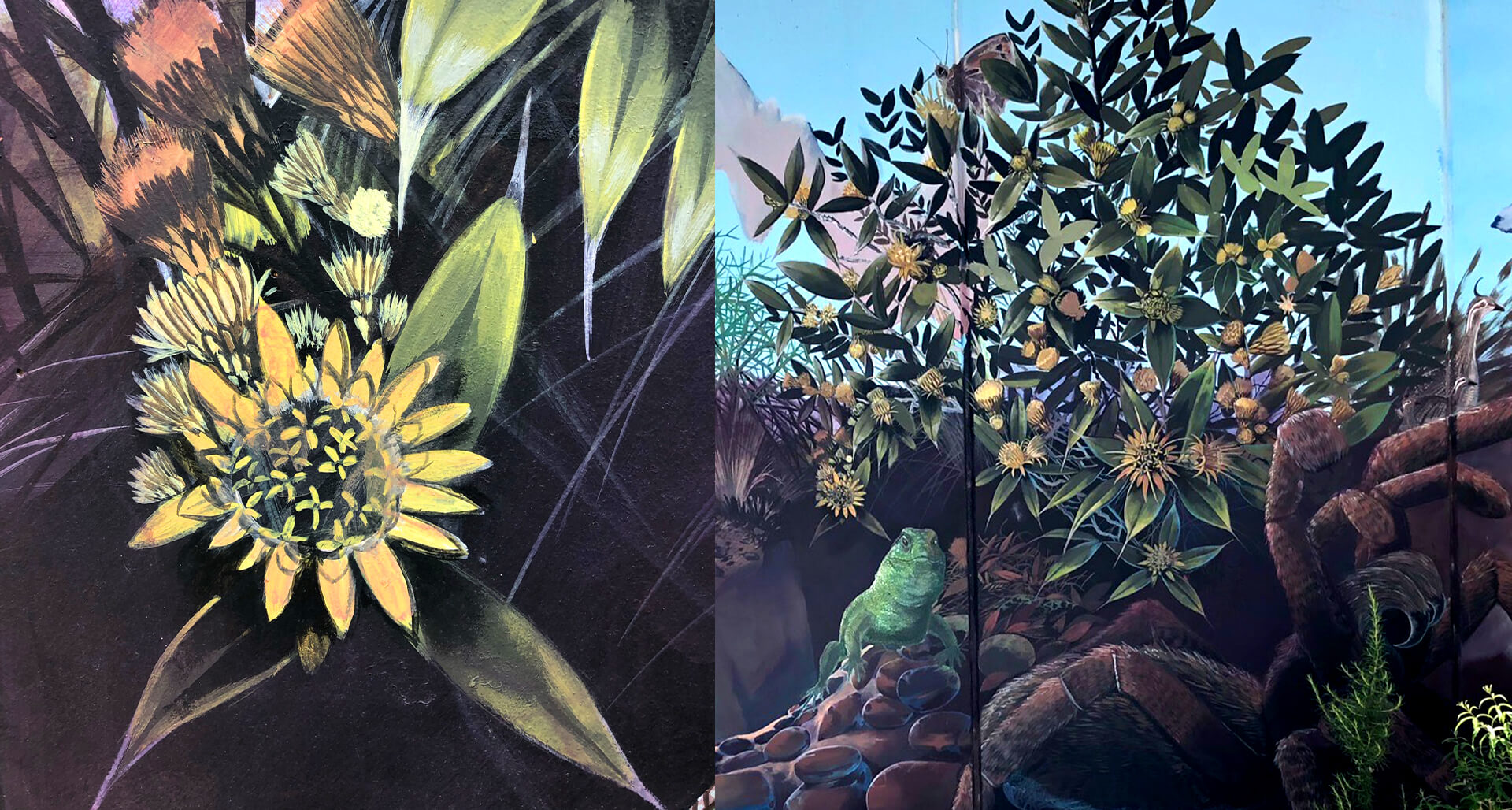
La vegetación
Se dispone formando parches, rodeada de suelo desnudo. Las especies se han adaptado a las condiciones de aridez adoptando formas achaparradas, presentando espinas, hojas pequeñas (microfilia) y tallos acumuladores de agua, entre otras. También se han adaptado a la herbivoría, desarrollando sustancias orgánicas complejas que las hacen tóxicas o menos palatables a los herbívoros. La fisonomía también es variada y pueden observarse estepas arbustivas, subarbustivas, herbáceas y eriales.
Vegetation
It is arranged in patches, surrounded by bare soil. The species have adapted to the arid conditions by adopting stunted forms, presenting thorns, small leaves (microphyll) and water-accumulating stems, among others. They have also adapted to herbivory, developing complex organic substances that make them toxic or less palatable to herbivores. The physiognomy is also varied and arbustive, subarbustive, herbaceous and wastelands steppes can be observed.


Los suelos
Poco desarrollados y de colores claros, pobres en materia orgánica. Con baja fertilidad. De textura arenosa y con canto rodado en el perfil y en superficie. En la zona costera pueden desarrollarse suelos muy arenosos, mientras que en bajos y depresiones son ricos en arcilla y con importantes concentraciones de sales. En áreas de mallines, donde hay un aporte de agua subsuperficial, los suelos son más desarrollados y ricos en materia orgánica. Por lo tanto, son suelos más productivos, lo que ha provocado un mayor uso de estos ambientes que en algunos casos ha desencadenado procesos de degradación como la erosión de los suelos y la salinización. Los signos más dramáticos de estos procesos de degradación son la formación de cárcavas, la pérdida de la cobertura vegetal y en algunos casos extremos la desaparición del mallín o humedal.
Soils
Poorly developed and light-colored, poor in organic material. With low fertility. Sandy texture and with pebbles in the profile and on the surface. In the coastal zone very sandy soils can develop, while in lows and depressions they are rich in clay and with important concentrations of salts. In areas of mallines, where there is a subsurface water supply, the soils are more developed and richer in organic material. Therefore, they are more productive soils, which has led to greater use of these environments, which in some cases has triggered degradation processes such as soil erosion and salinization. The most dramatic signs of these degradation processes are the formation of gullies, the loss of vegetation cover and in some extreme cases the disappearance of the mallín or wetland.

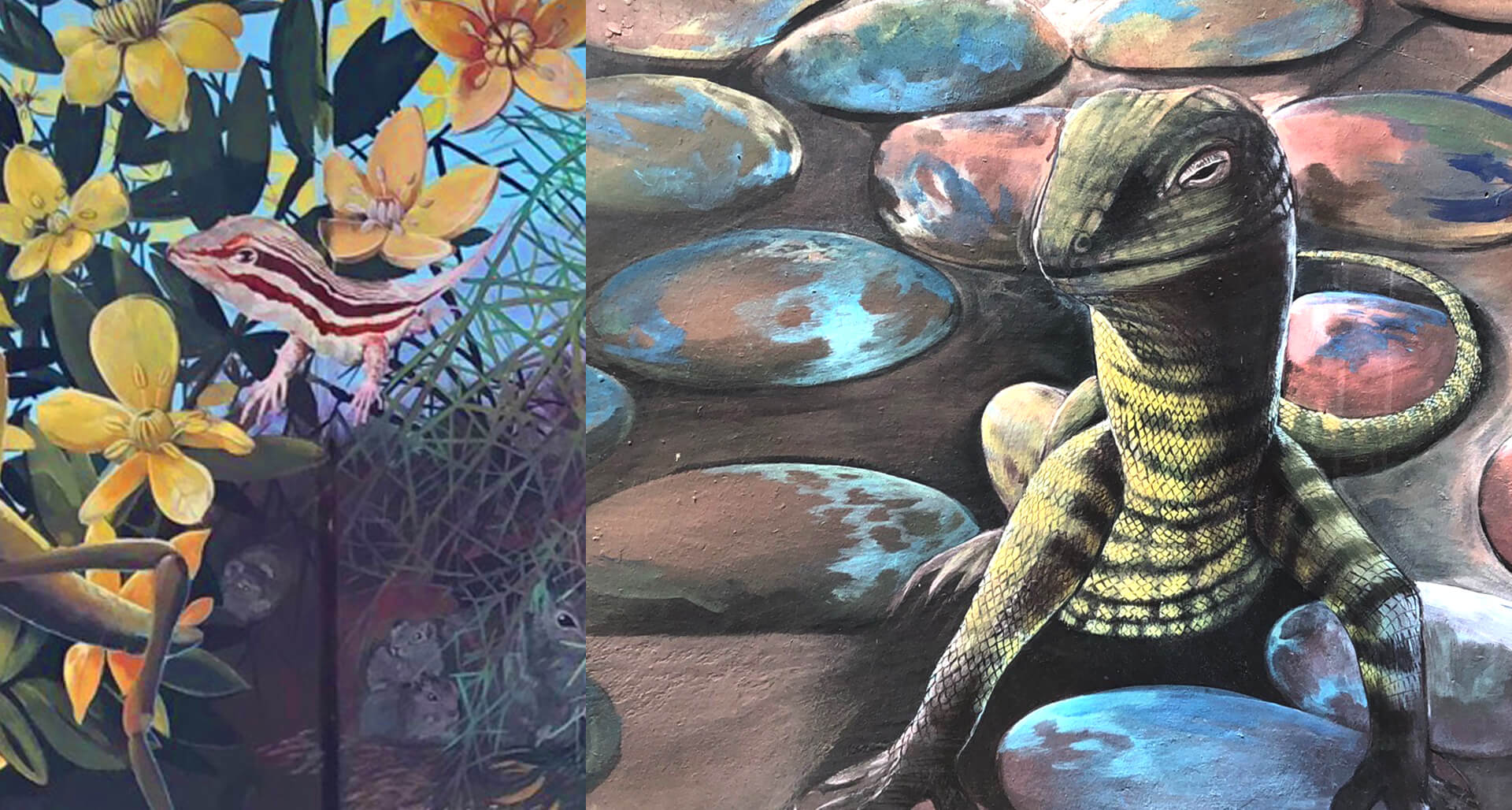
Los reptiles
El Monte es una unidad ecogeográfica caracterizada por una diversidad de reptiles muy particular, en muchos casos compartidos con ecorregiones colindantes, pero con ciertos endemismos muy interesantes. Se encuentran tres grupos de reptiles: tortugas, serpientes y lagartijas. Las tortugas están representadas por una sola especie y se refiere a la tortuga terrestre argentina cuya distribución geográfica alcanza hasta el sur de Río Negro, mientras que las serpientes se encuentran representadas por varias especies de culebras y una víbora, la yarará ñata, exclusiva de la región del Monte y la única relativamente peligrosa. Por su parte, las lagartijas son las más notorias y llamativas y en su mayoría exclusivas del Monte austral. Estas especies son representantes únicas de una fauna aún poco conocida y cada vez más amenazada.
Reptiles
The Mount is an ecogeographic unit characterized by a very particular reptile diversity, in many cases shared with neighboring ecoregions, but with some very interesting endemisms. There are three groups of reptiles: turtles, snakes and lizards. The turtles are represented by a single species and it refers to the Argentine land turtle whose geographic distribution reaches the south of Río Negro, while the snakes are represented by several species of snakes and a viper, the yarará ñata, exclusive of the Mount region and the only relatively dangerous one. On the other hand, the lizards are the most notorious and striking and mostly exclusive of the southern Mount. These species are unique representatives of a fauna that is still little known and increasingly threatened.
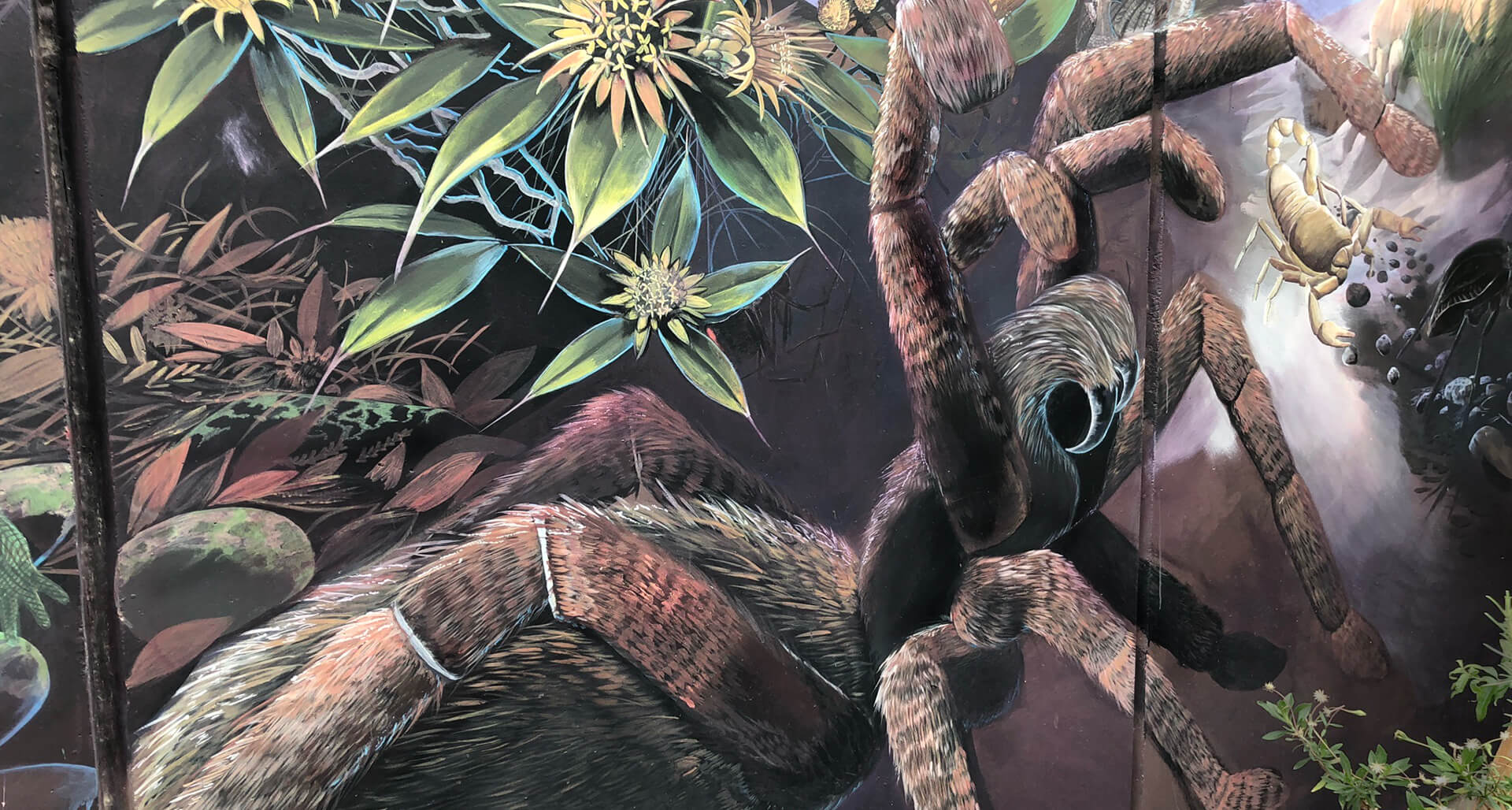
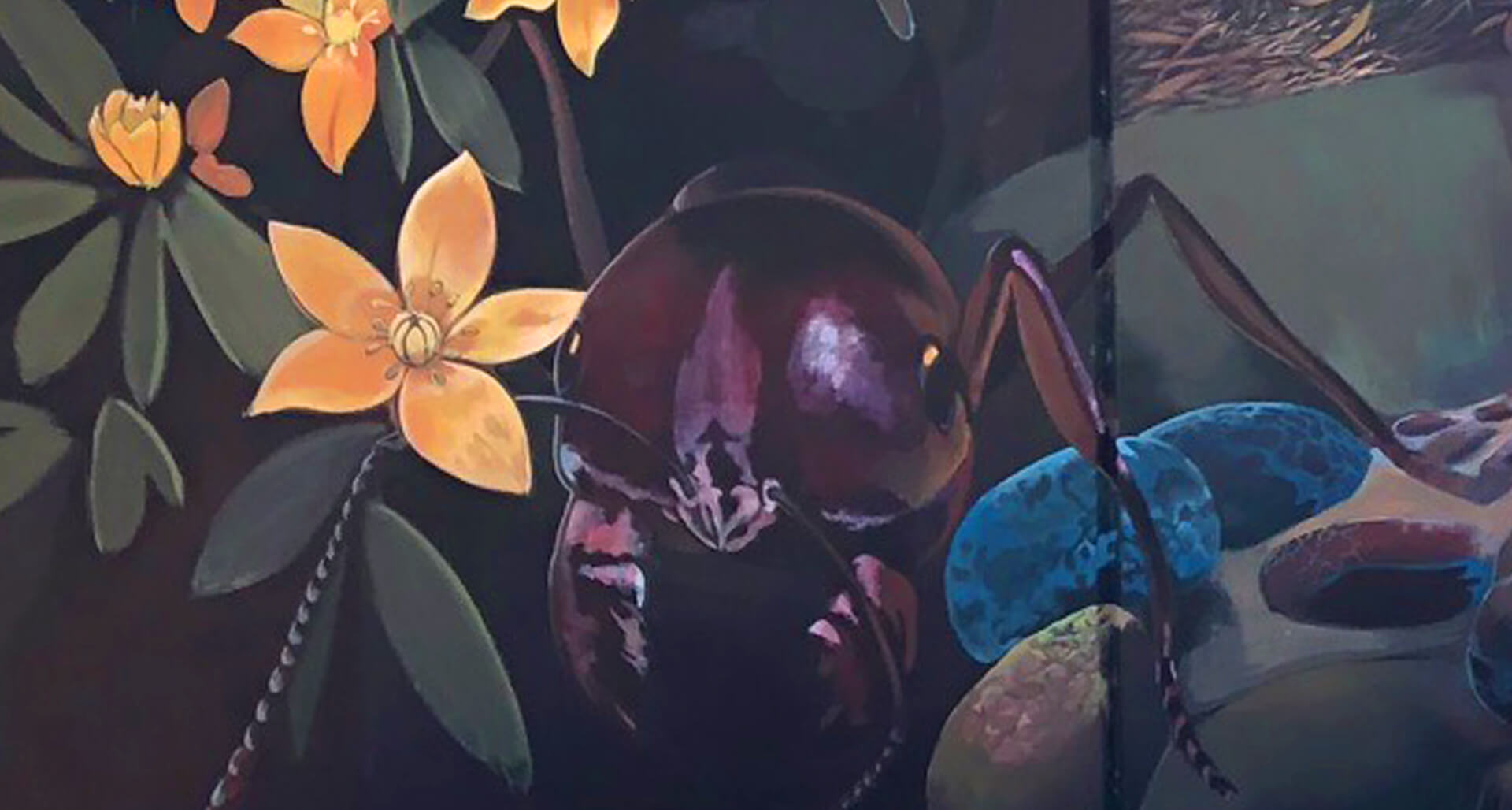
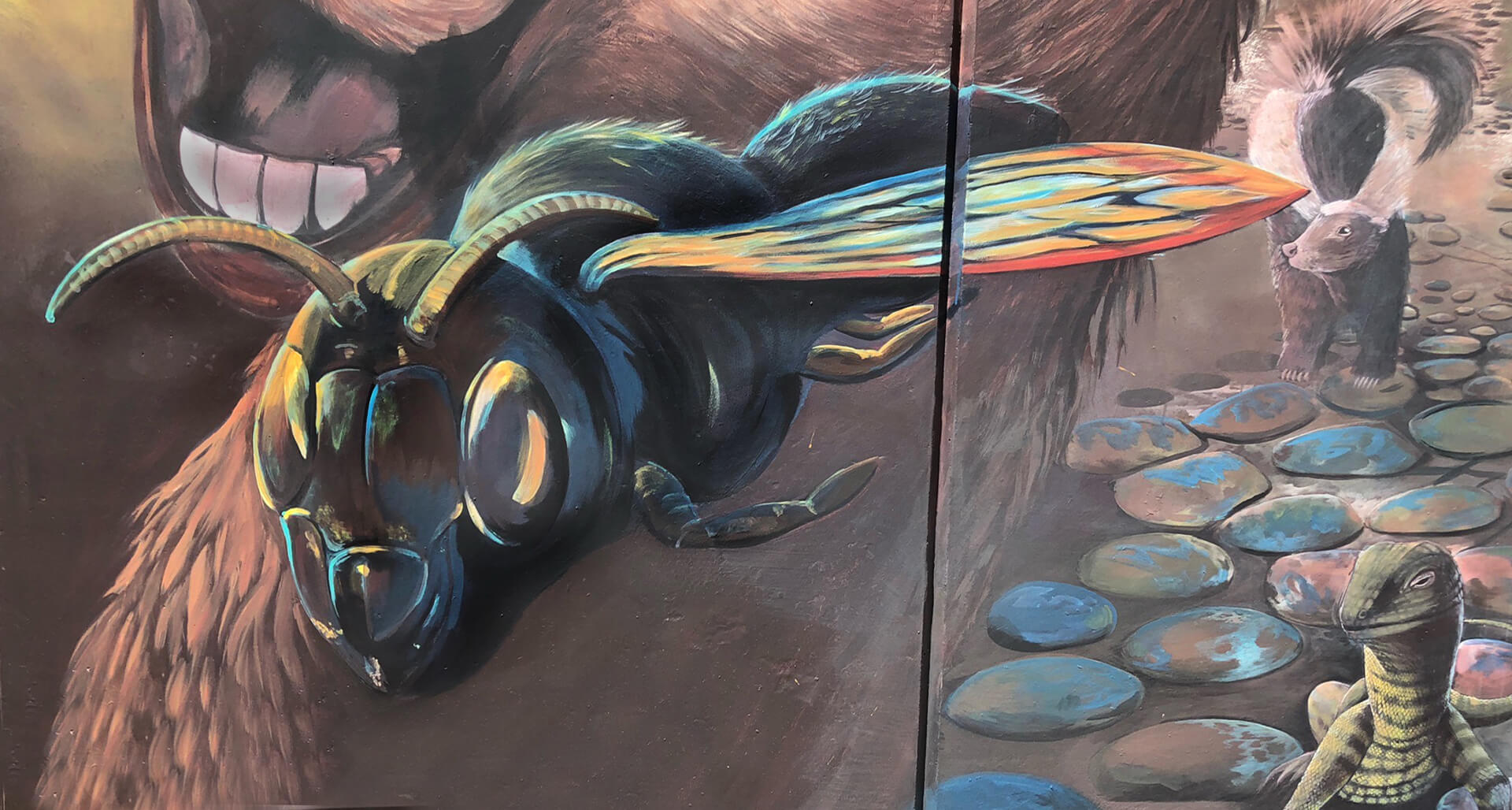
Insectos y arácnidos
Los insectos y arácnidos ocupan una inmensa variedad de espacios, desarrollando roles vitales en la estructura y fertilidad de los suelos, polinización, ciclos de nutrientes, en la descomposición de la materia orgánica y control de especies exóticas. Así estos organismos crean patrones y regulan importantes procesos a nivel ecosistémico. Al mismo tiempo, tanto los insectos como los arácnidos, debido a su estrecha relación con el ambiente y sus ciclos de vida cortos, exhiben rápidas respuestas a los cambios ambientales. De esta forma, han demostrado ser muy útiles indicadores de cambio ambiental en la Patagonia árida, ya sea por motivos naturales (heterogeneidad de la vegetación y el suelo) o por degradación en sus hábitats por acción humana (sobrepastoreo, desertificación, fuego, tala y obras de infraestructura, entre otros).
Insects and arachnids
Insects and arachnids occupy an immense variety of spaces, playing vital roles in soil structure and fertility, pollination, nutrient cycling, decomposition of organic material and control of exotic species. Thus, these organisms create patterns and regulate important processes at the ecosystem level. At the same time, both insects and arachnids, due to their close relationship with the environment and their short life cycles, exhibit rapid responses to environmental changes. In this way, they have proved to be very useful indicators of environmental change in arid Patagonia, either for natural reasons (heterogeneity of vegetation and soil) or due to degradation of their habitats by human action (overgrazing, desertification, fire, logging and infrastructural works, among others).
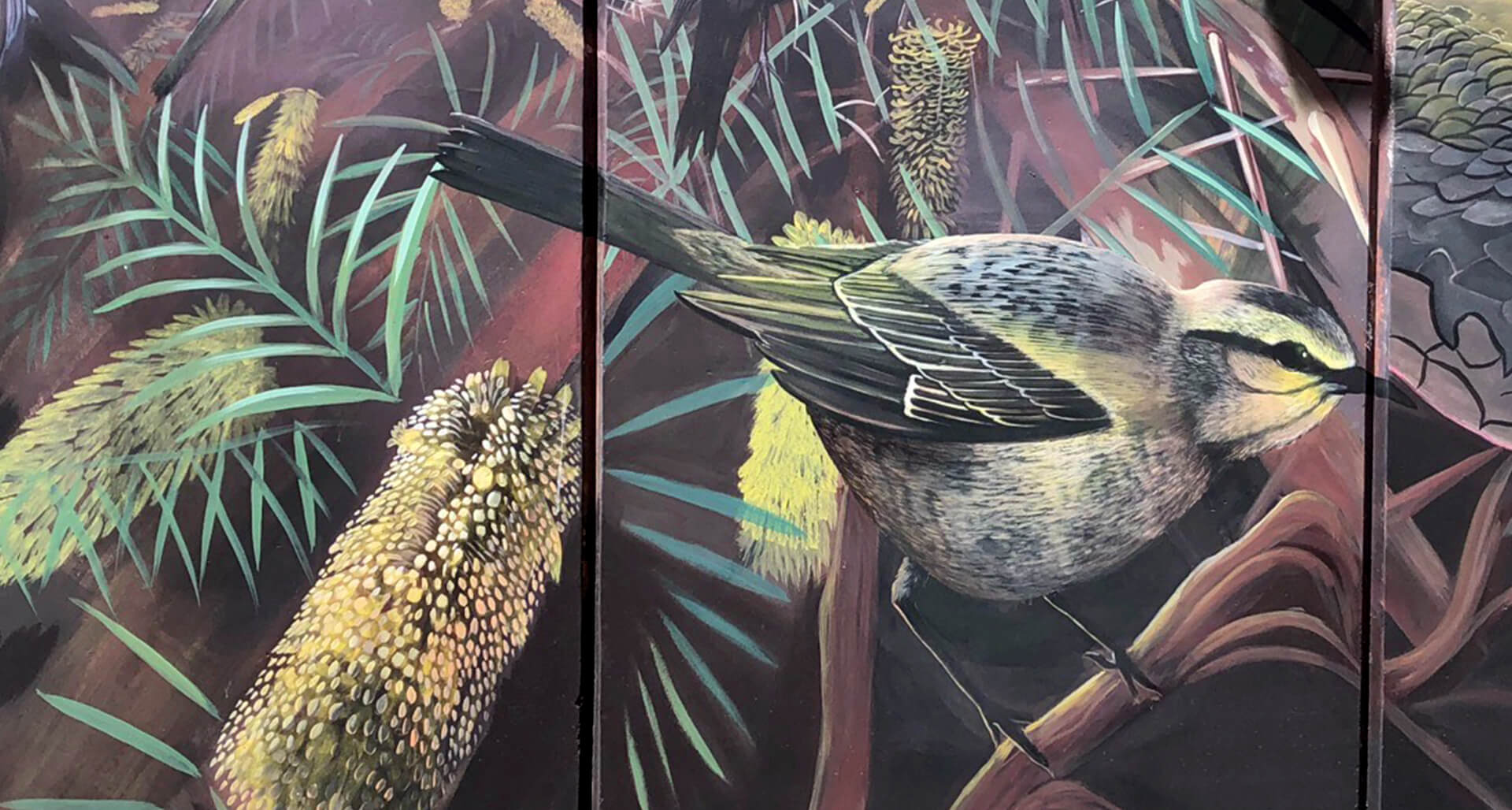

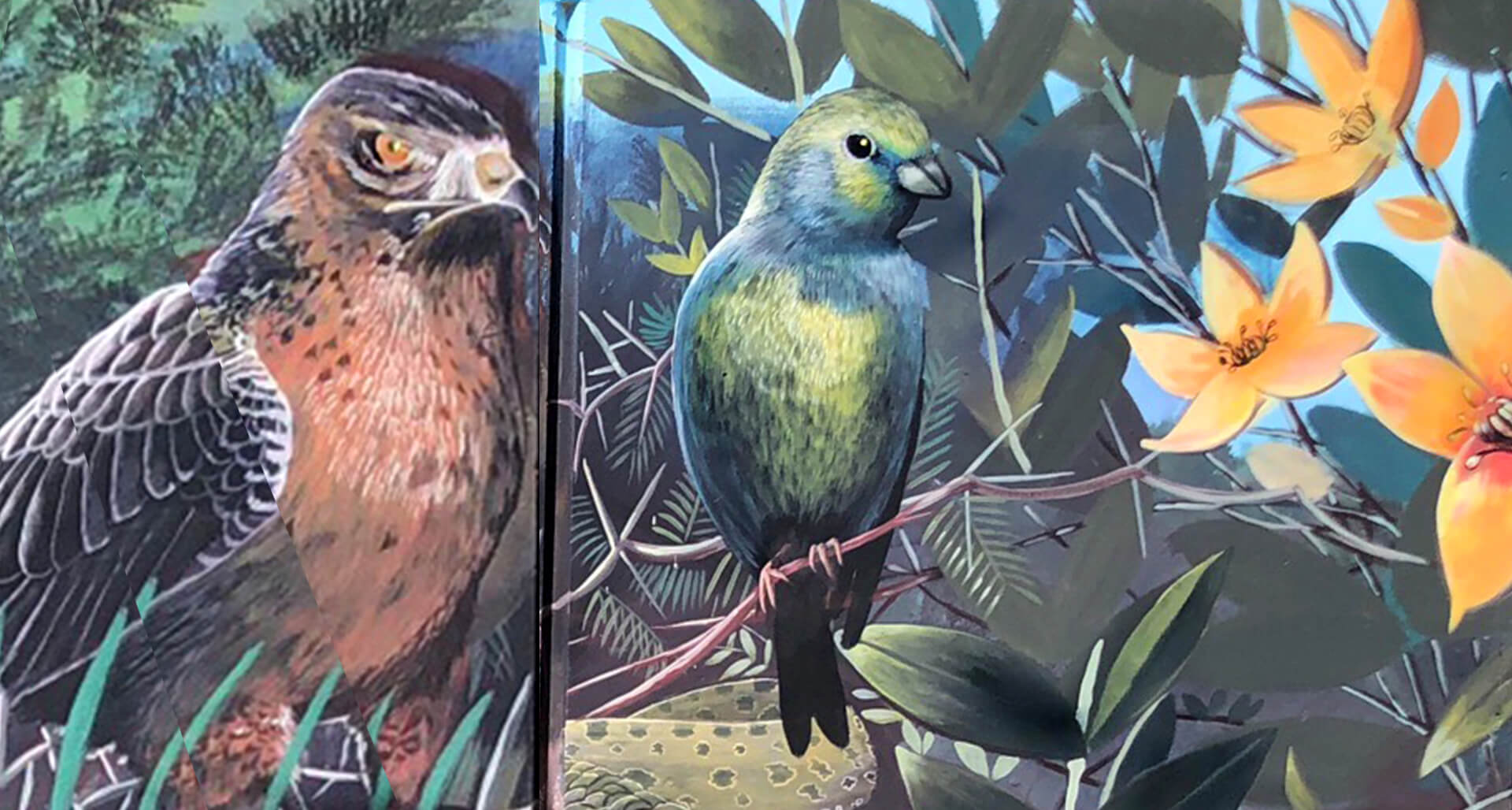
Aves
Representan un variado grupo con diversos tamaños y hábitos. Algunas de ellas se pueden ver fácilmente volando sobre los arbustos o posadas en ellos, otras son corredoras de gran tamaño, como el choique y otras nos cautivan con sus llamativos trinos, como las loicas y calandrias. También hay especies más inquietas y escurridizas que se esconden bajo la vegetación o corretean por el suelo. Las rapaces, como las lechuzas, búhos, halcones, águilas, jotes, caranchos y chimangos, cumplen un importante rol controlando a las poblaciones de sus presas como pequeños vertebrados (incluyendo roedores) y artrópodos; mientras que las de hábitos carroñeros facilitan la limpieza de los cuerpos en descomposición, manteniendo así las funciones, la dinámica y el equilibrio del ecosistema.
Birds
They represent a varied group with different sizes and habits. Some of them can be easily seen flying over the bushes or perched on them, others are large runners, such as the choique and others captivate us with their striking trills, such as the loicas and the calandrias. There are also more restless and elusive species that hide under vegetation or run around the ground. Raptors, such as owls, hawks, eagles, vultures, caranchos, and chimangos, play an important role in controlling the populations of their prey such as small vertebrates (including rodents) and arthropods; while those of scavenging habits facilitate the cleaning of decomposing bodies, thus maintaining the functions, dynamics and balance of the ecosystem.



